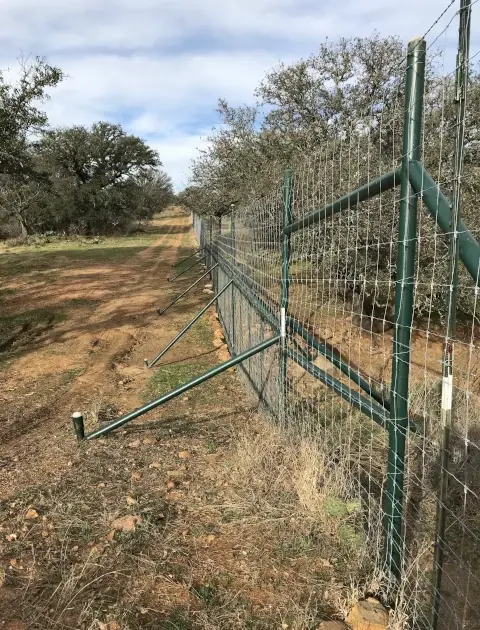November 2, 2023

High fencing is a common management practice used on Texas game ranches to prevent the spread of disease in white-tailed deer. High fences are typically at least eight feet tall and made of durable materials such as woven wire or chain link. They are designed to prevent deer from entering or exiting the ranch.
How High-Fencing Can Benefit Game Ranchers
- Preventing contact with infected deer from outside the ranch. This is especially important for diseases that are transmitted through direct contact, such as chronic wasting disease (CWD).
- Reducing the number of biting midges that have access to deer. Biting midges can transmit diseases such as epizootic hemorrhagic disease (EHD) and bluetongue virus (BTV).
- Allowing ranch managers to control the density of the deer population. Overcrowding can lead to stress and weakened immune systems, making deer more susceptible to disease.
- Facilitating surveillance and testing for diseases. Ranch managers can more easily identify and isolate infected deer if they are confined to a smaller area.
In addition, high fencing can also help to prevent the spread of other diseases that are transmitted through indirect contact, such as tuberculosis and brucellosis. These diseases can be transmitted through contact with contaminated saliva, feces, and urine. High fencing can help to reduce the risk of indirect contact by preventing infected deer from entering the ranch and by making it more difficult for contaminated materials to be transported into the ranch by other animals or humans.
High fencing can also help to prevent the introduction of new diseases into a deer herd. For example, the Texas Parks and Wildlife Department (TPWD) has established a CWD Management Zone in West Texas. This zone is designed to prevent the spread of CWD to other parts of the state. All deer breeders and landowners with high fences in the CWD Management Zone are required to test their deer for CWD. This helps to ensure that infected deer are not transported out of the zone and introduced to other deer herds.
Overall, high fencing can be a valuable tool for preventing the spread of disease in white-tailed deer on Texas game ranches. However, it is important to note that high fencing is not a perfect solution. It is important to follow other management practices as well, such as testing deer for diseases, providing them with adequate food and water, and managing the deer population density.
More Ways High Fencing Can Help

- High fences can help to prevent the spread of parasites, such as ticks and lice. These parasites can transmit diseases such as Lyme disease, anaplasmosis, and babesiosis.
- High fences can help to improve the quality of deer habitat. When deer are confined to a smaller area, they are less likely to overgraze on vegetation. This can lead to healthier vegetation and a more diverse habitat, which can benefit deer and other wildlife.
- High fences can help to reduce stress in deer. Deer that are constantly on the move, trying to find food and avoid predators, are more likely to be stressed. Stress can weaken the immune system and make deer more susceptible to disease.
By providing a safe and healthy environment for deer, high fencing can help to prevent disease and improve the overall health of the deer herd.
Protect Your Assets
Game fences installed by Fred Nuncio Fencing & Construction are built to last.